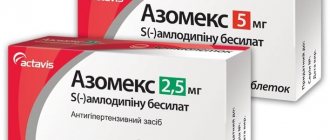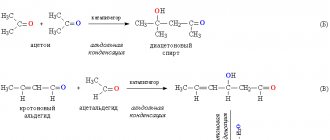PREMATURE MENOPAUSE
The term “menopause” is derived from the Greek “menos” (month) and “pausos” (end) and means the permanent cessation of menstruation or menstrual cycles, caused by a pronounced decrease and/or cessation (switching off) of ovarian function.
Depending on the time of onset, the following types of menopause are distinguished:
- timely (45-55 years, average 49-52 years);
- premature (36-40 years);
- early (41-45 years);
- late (over 55 years old).
Timely menopause is the most striking manifestation of the menopause or transitional period in a woman’s life. “Climacteric” (from Greek - step, ladder), the terms “menopause”, “menopause”, “menopause” are synonyms denoting the transition from the reproductive period to old age. This period is divided into premenopause, menopause, postmenopause and perimenopause. What is most characteristic of this physiological period? It is characterized by a gradual decrease and exclusion of ovarian function from a complex ensemble of endocrine glands. First, reproductive function decreases and turns off, then, against the background of progressive depletion of the follicular apparatus of the ovaries, menstrual cycles stop (menopause), and 3-5 years after menopause, the hormonal function of the ovaries also turns off.
Both premature and late menopause require close attention and correction of possible disorders. Due to the fact that it is always difficult to estimate which menstruation was the last, it is customary to estimate the date of menopause retrospectively, namely: one year after the last menstruation.
The age of menopause often depends on heredity, which is convincingly shown in identical twins, when the difference in the age of the first and last menstruation in twins ranges from 4-6 months. However, illnesses suffered by the individual and environmental factors play an important role.
Premature menopause is quite rare (1-2%), but there are many reasons for its occurrence. Often the true cause is quite difficult to establish.
The ovary is a complex structure within which the cortical and medulla layers are distinguished. In the ovarian cortex, eggs are laid in utero, surrounded by granulosa cells, forming follicles with eggs. By the time of the first menstruation in puberty, 300-400 thousand of these follicles are found in the ovaries. During the 25-30 years of the reproductive period, follicle maturation, ovulation and death (atresia) of follicles through apoptosis constantly occur in the ovaries. Only 0.1% of the number of follicles ovulate and can give birth to offspring, and 99.9% are atretic. By the age of 40, an average of about 10 thousand follicles remain. In addition, both female (estrogens and progesterone) and, to a lesser extent, male sex hormones are synthesized in the ovaries. These hormones are involved in the formation of a typical female physique and monthly prepare the reproductive organs for pregnancy.
Receptors for estrogen and progesterone have been identified not only in the reproductive organs. Hormonal receptors (representations), through which sex hormones exert their effects, are found in the heart and walls of blood vessels, in the central nervous system, bone, genitourinary and other organs and systems of the body. Since a young woman secretes sex hormones in a cyclical mode, then the organs and tissues experience their effects also in a cyclical mode.
With premature menopause, the cyclic release and influence of female sex hormones on various organs and tissues that have been exposed to this effect for decades ceases. In addition, the woman also loses the ability to conceive.
In recent years, the opinion has become increasingly widespread that it may be more appropriate to call this condition not “premature menopause”, but “premature ovarian failure”. Although, in essence, we are talking about the same process, from the point of view of deontology, it is more appropriate for both the doctor and the patient to call this condition “premature ovarian failure.”
The main causes of premature ovarian failure:
- genetic factors;
- autoimmune process;
- viral infection;
- iatrogenic (chemotherapy, radiotherapy, surgery on the uterus and ovaries);
- idiopathic (environmental toxins, fasting, smoking - more than 30 cigarettes per day).
According to our practice, premature ovarian failure is often observed in mothers and daughters. Despite the fact that there are many reasons, processes in the ovaries mainly occur according to two main scenarios:
- complete depletion of the follicular apparatus of the ovaries, the so-called ovarian depletion syndrome;
- syndrome of resistant (silent, refractory) ovaries, in which follicles are detected in the ovaries, but they do not respond to their own gonadotropic stimuli.
Clinical picture
Common to both options:
- secondary amenorrhea, infertility;
- well developed secondary sexual characteristics;
- FSH and LH levels are high;
- estradiol levels are low;
- symptoms of estrogen deficiency: hot flashes, sweating, insomnia, irritability, decreased memory, and ability to work;
- during the first 2-3 years, osteopenia develops, sometimes osteoporosis; an increase in atherogenic lipid fractions (cholesterol, triglycerides, LDL) and a decrease in HDL;
- occasionally genitourinary symptoms appear: dryness during sexual intercourse, itching, burning;
- improvement occurs when taking sex hormones.
The main differences between the two forms of premature ovarian failure are as follows.
When the follicular apparatus is depleted:
- with ultrasound - small size of the ovaries, absence of follicles in them;
- persistent cessation of menstruation, symptoms of estrogen deficiency progress;
improvement occurs with hormone replacement therapy (HRT); with ovarian resistance: - the ovaries are reduced in size, but the follicles are visible;
- There are rare episodes of menstruation.
When the ovaries are depleted, the symptoms of estrogen deficiency or the symptoms of typical menopausal syndrome are more pronounced.
With resistant ovarian syndrome, estrogen deficiency symptoms are less pronounced, since it is possible, although extremely rare, to activate ovarian function and, accordingly, improve the general condition.
Tactics for managing patients with premature ovarian failure
- Examination.
- Study of anamnesis.
- Determination of FSH, LH, TSH, prolactin, estradiol in the blood.
- Craniography, for headaches - computed tomography or nuclear magnetic resonance, color fields of vision.
- Ultrasound of the genitals with detailed characteristics of the ovaries and uterus.
- Determination of blood lipids.
- Mammography.
- For long-term amenorrhea (more than 2-3 years) - densitometry of the lumbar spine and femoral neck.
Since menopause is premature, and at this age the ovaries normally function, therefore, premature deficiency of sex hormones can contribute to the earlier appearance of typical menopausal disorders, the frequency of which is 60-70%.
Classification of menopausal disorders
Group I - early symptoms (typical menopausal syndrome)
Vasomotor: hot flashes, chills, increased sweating, headaches, hypotension or hypertension, rapid heartbeat.
Emotional-vegetative: irritability, drowsiness, weakness, anxiety, depression, forgetfulness, inattention, decreased libido.
Group II - medium-term (after 2-3 years)
Urogenital: vaginal dryness, pain during sexual intercourse, itching and burning, urethral syndrome, cystalgia, urinary incontinence.
Skin and its appendages: dryness, brittle nails, wrinkles, hair loss.
Group III - late metabolic disorders (after 5-7 years)
Cardiovascular diseases (CHD, atherosclerosis), postmenopausal osteoporosis or osteopenia.
Individual selection of therapy
Taking into account the above, it seems important to develop an individual “program for restoring and maintaining health” for the long term, taking into account the family and personal risk of the main diseases of aging. Such a program should include regular examination, namely ultrasound, mammography, densitometry and/or determination of biochemical markers of bone remodeling, lipid profile, tumor markers, etc., as well as recommendations for lifestyle changes, such as increasing physical activity, a balanced diet, avoiding Smoking and other bad habits help reduce the risk of cardiovascular diseases and osteoporosis.
In recent years, there has been a constant search and improvement of therapeutic approaches to the rational use of HRT in each specific patient (individualization of therapy). HRT preparations differ from each other only in their progestogen component, since the estrogenic component is represented by 17β-estradiol or estradiol valerate, which correspond in structure to ovarian estradiol. In addition, recently much attention has been paid to the choice of route of drug administration (oral or transdermal).
The type of hormone therapy is also selected taking into account the following factors:
- a woman's desire to have a monthly "menstruation";
- when indicating surgical interventions - indications and scope of the operation and the presence of the uterus;
- the presence of fear of pregnancy, especially with resistant ovaries;
- decreased or absent libido;
- indications of heart attacks in young parents, recurrent miscarriage, liver disease, thrombophlebitis.
The goal of HRT is to pharmacologically replace the hormonal function of the ovaries in women with deficiency of sex hormones, using such minimally optimal doses of hormones that would actually improve the general condition of patients, ensure the prevention of late metabolic disorders and are not accompanied by the side effects of estrogens and progestogens.
Basic principles and indications for prescribing HRT
- The use of only “natural” estrogens and their analogues for HRT is indicated.
- Estrogen doses are low and should be consistent with those in the early proliferation phase of young women.
- The combination of estrogens with progestogens makes it possible to protect the endometrium from hyperplastic processes with an intact uterus.
- Women with a removed uterus are advised to use estrogen monotherapy in intermittent courses or continuously. If the indication for hysterectomy was endometriosis, then a combination of estrogens with progestogens or with androgens, or monotherapy with progestogens or androgens in a continuous mode, is used.
Women need to be provided with appropriate information to enable them to make an informed decision to undergo HRT. All women should be informed:
- about the possible impact of short-term estrogen deficiency, namely the occurrence of early typical symptoms of menopausal syndrome and the consequences of prolonged deficiency of sex hormones: osteoporosis, cardiovascular diseases, genitourinary disorders, etc.;
- about the positive effects of HRT, which can alleviate and eliminate early menopausal symptoms, and also actually serve to prevent osteoporosis and cardiovascular diseases;
- about contraindications and side effects of HRT.
To ensure optimal clinical effect with minimal adverse reactions, it is essential to determine the most appropriate optimal doses, types and routes of administration of hormonal drugs.
There are three main modes of HRT.
- Estrogen monotherapy. In the absence of a uterus (hysterectomy), estrogen monotherapy is prescribed in intermittent courses or continuously.
- Combination therapy (estrogens with progestogens) in a cyclic mode.
- Combination therapy (estrogens with progestogens) in a monophasic continuous mode.
Regimes 2 and 3 are prescribed to women with an intact uterus.
Estrogen monotherapy: intermittent courses (estrofem, progynova, estrimax, divigel, estrogel, climar patch, ovestin) or continuous regimen for 3-4 weeks with weekly breaks.
Combination therapy (estrogens with progestogens) in a cyclic mode:
- two-phase drugs: intermittent cyclic regimen (Divina, Klimen, Klimonorm);
- two-phase drugs: continuous mode (femoston 2/10 or femoston 1/10);
- three-phase drugs in continuous mode (trisequence, triaclim).
With this regimen, a menstrual-like reaction is observed, which is extremely important psychologically for a young woman.
Monophasic combination therapy (estrogens with progestogens) in a continuous mode (cliogest, climodien, pausogest).
With a continuous regimen of hormone therapy, a menstrual-like reaction is excluded.
Livial (tibolone) has continuous estrogenic, progestogenic and weak androgenic activity.
If a hysterectomy is performed for genital endometriosis, preference is given to monophasic combination therapy (Climodien, Cliogest, Pausogest) or Livial in order to exclude stimulation of possible endometriotic heterotopies by estrogen monotherapy.
If the clinical picture is dominated by changes in the cardiovascular system and atherogenic fractions of lipids in the blood, preference should be given to two- or three-phase drugs in which the gestagenic component is represented by progesterone derivatives (Climen, Femoston).
If the clinical picture is dominated by weakness, asthenia, decreased libido, pain in bones and joints, and osteoporosis, then preference should be given to biphasic drugs with a gestagenic component - a derivative of 19-nortestosterone (klimonorm), as well as Divin (MPA with a weak androgenic effect) ( table).
For urogenital disorders in perimenopause, preference is given to local (vaginal) monotherapy with estriol without the addition of progestogens. When urogenital disorders are combined with systemic metabolic disorders (osteoporosis, atherosclerosis), a combination of local and systemic therapy is possible.
Cyclic two- and three-phase HRT, along with improving the general condition, contributes to the regulation of the menstrual “cycle”, as well as the prevention of hyperplastic processes in the endometrium due to the cyclic addition of progestogens. It is extremely important to inform the woman about the following:
- when taking two- or three-phase HRT, a monthly menstrual-like reaction is observed;
- HRT drugs do not have a contraceptive effect.
So, combined two- and three-phase drugs are most suitable for women with premature menopause, as they provide cyclic protection of the endometrium with progestogens, similar to what happens in the normal menstrual cycle.
For severe diseases of the liver, pancreas, migraines, blood pressure more than 170 mm Hg. Art., with a history of thrombophlebitis, parenteral administration of estrogens in the form of a weekly patch (Klimar) or gel (Divigel, Estragel) is indicated. In such cases, with an intact uterus, it is necessary to add progesterone and its analogues (duphaston, utrozhestan).
The following examination is recommended before prescribing HRT:
- gynecological examination with oncocytology;
- Ultrasound of the genital organs;
- mammography;
- according to indications - lipid profile, osteodensitometry.
Contraindications for prescribing HRT: - vaginal bleeding of unknown origin;
- acute severe liver disease;
- acute deep vein thrombosis;
- acute thromboembolic disease;
- cancer of the breast, uterus and ovaries (current; if in history, then exceptions are possible);
- endometriosis (estrogens monotherapy is contraindicated);
- congenital diseases associated with lipid metabolism - hypertriglyceridemia, the use of parenteral forms is indicated.
If there are contraindications to HRT, the issue of using alternative therapy is decided: phytoestrogens (climadinon) or homeopathic remedies (climatoplan).
It is appropriate to note that if a woman has a severe reaction to “menopause” and fears of pregnancy, it is quite possible to use low- and micro-dose combined oral contraceptives: Logest, Mercilon, Novinet, Marvelon, Regulon, Yarina - since the number of contraindications increases with age.
Hormone therapy should be continued until the age of natural menopause (50-55 years); in the future, the issue is resolved individually, taking into account the woman’s wishes, her state of health, and reaction to hormonal drugs.
Premature menopause (premature ovarian failure) is a condition characterized by premature shutdown of the ovaries and the development of an estrogen deficiency state. Women with this condition are indicated for hormone replacement therapy to improve their general condition, improve quality of life, and prevent premature aging and diseases of old age.
V. P. Smetnik, Doctor of Medical Sciences, Professor of the Scientific Center of Obstetrics, Gynecology and Perinatology of the Russian Academy of Medical Sciences, Moscow
Composition of biphasic drugs for HRT registered in Russia
| A drug | Estrogens | Dose, mg/day | Progestogens | Dose, mg/day |
| Divina | estradiol valerate | 2 | IPA | 10 |
| Klymen | estradiol valerate | 2 | cyproterone acetate | 1 |
| Klimonorm | estradiol valerate | 2 | levonorgestrel | 0,15 |
| Femoston 2/10 | 17β-estradiol | 2 | dydrogesterone (duphaston) | 10 |
| Femoston 1/10 | 17β-estradiol | 1 | dydrogesterone (duphaston) | 10 |
Femoston 1 tablet film 1mg/10mg 28 pcs
Pregnancy and breastfeeding period; diagnosed or suspected breast cancer; diagnosed or suspected estrogen-dependent malignancies (for example, endometrial cancer); diagnosed or suspected progestogen-dependent neoplasms (for example, meningioma); bleeding from the vagina of unknown etiology; untreated endometrial hyperplasia; thrombosis (arterial and venous) and thromboembolism currently or in history (including thrombosis, deep vein thrombosis; pulmonary embolism, myocardial infarction, ischemic or hemorrhagic cerebrovascular disorders); multiple or severe risk factors for the development of arterial or venous thrombosis associated with congenital or acquired predisposition, for example, protein C deficiency, protein S deficiency, antithrombin III deficiency, the presence of antibodies to phospholipids (anticardiolipin antibodies, lupus anticoagulant), angina pectoris, prolonged immobilization, severe forms of obesity (body mass index more than 30 kg/m2), diseases of the cerebral vessels or coronary arteries, transient ischemic attacks, complicated lesions of the heart valves, atrial fibrillation; acute or chronic liver diseases currently or in history (before normalization of liver function tests), including malignant liver tumors; porphyria; hypersensitivity to the components of the drug; galactose intolerance, lactase deficiency, glucose-galactose malabsorption syndrome. The drug should be discontinued if contraindications are identified and/or if the following conditions occur: jaundice and/or liver dysfunction; uncontrolled arterial hypertension; migraine-like headache that first appeared during the use of drugs for HRT. With caution: HRT is prescribed to women if they have currently or in history been diagnosed with: uterine leiomyoma, endometriosis; the presence of risk factors for the occurrence of estrogen-dependent tumors (for example, 1st degree relatives with breast cancer); arterial hypertension; benign liver tumors; diabetes mellitus, both in the presence of vascular complications and in their absence; cholelithiasis; migraine or severe headache; systemic lupus erythematosus; history of endometrial hyperplasia; epilepsy; bronchial asthma; otosclerosis.


